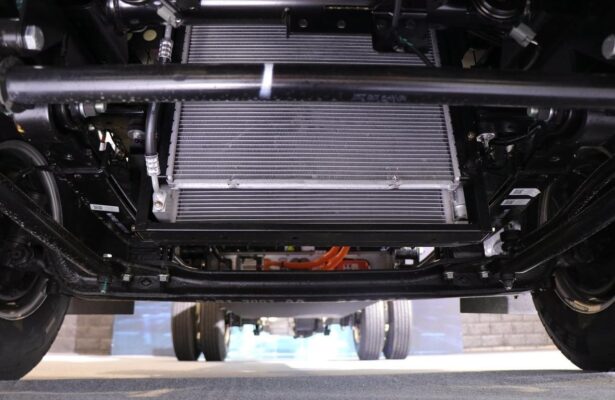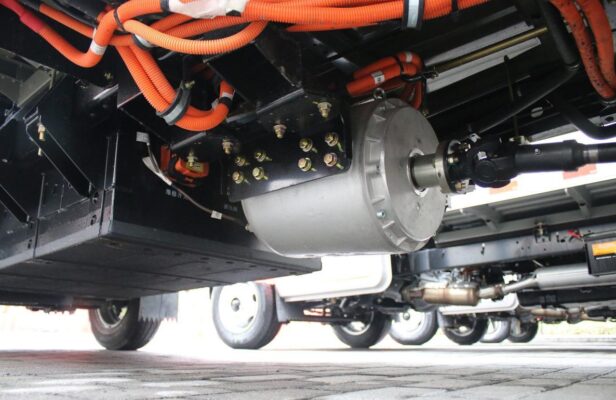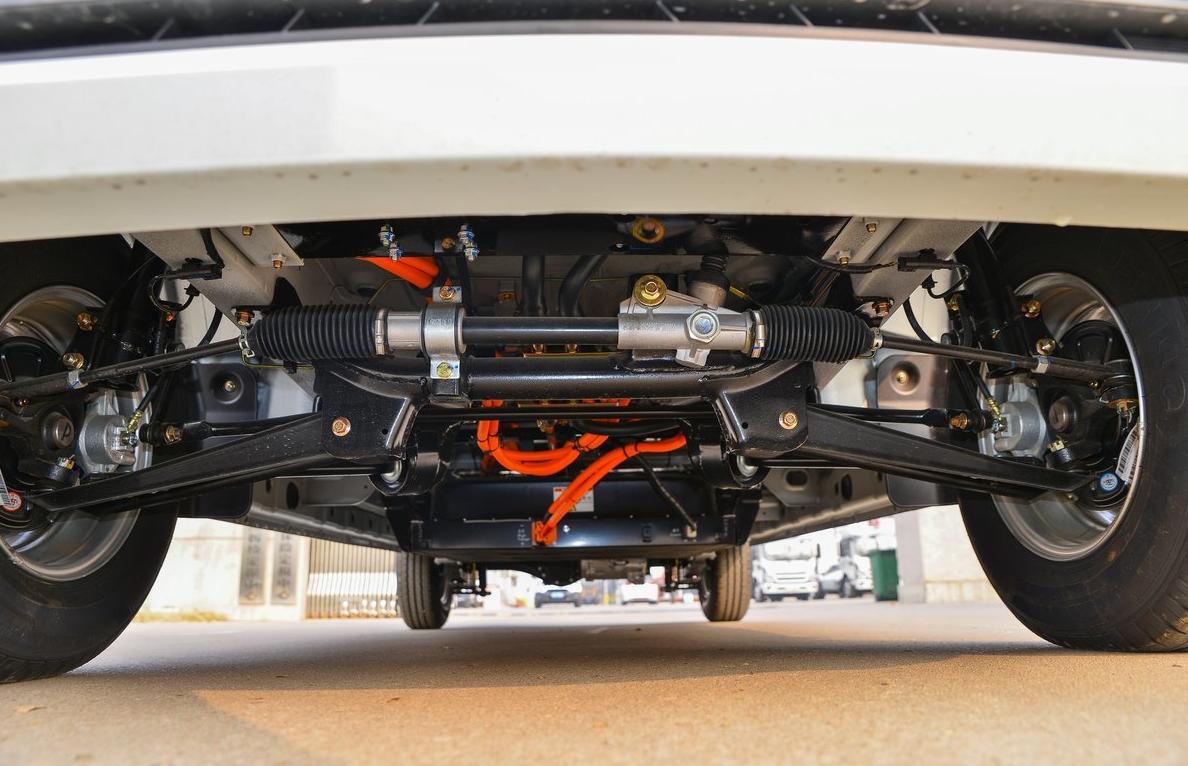Electric Truck News
How long can the batteries of new energy vehicles generally last?
Posted on by Electric Trucks
When considering the lifespan of the batteries in new energy vehicles, it is important to note that it is typically not measured in terms of time but rather by the number of charge and discharge cycles. A cycle refers to the process from a certain starting charge point to an ending charge point. In the case of deep charging and discharging, which is a 0 – 100% cycle, specific experimental data can be obtained. Generally speaking, lithium iron phosphate batteries can undergo approximately 2000 charge and discharge cycles, while the currently popular ternary lithium batteries can generally manage around 1400 cycles.

The cycle lifespan of a battery is directly related to its operating temperature. The figure on the left below represents the change in battery discharge capacity of Tesla batteries at different temperatures. The figure on the right shows the change in battery life in deep discharge cycles at different temperatures. It is clearly evident from these figures that the number of cycles when the battery operates at 35 degrees is significantly higher than under 55-degree conditions. At a lower temperature of 35 degrees, the battery experiences less stress and degradation, resulting in a longer cycle life. In contrast, at a higher temperature of 55 degrees, the battery is subjected to greater thermal stress, which accelerates the degradation process and reduces the number of cycles it can endure.
For example, imagine a new energy vehicle being driven in a region with a consistently high temperature of 55 degrees. The battery in this vehicle will face more challenges and will likely have a shorter overall lifespan compared to a vehicle operating in an area with a more moderate temperature of 35 degrees. The increased heat can cause the battery’s chemical reactions to occur more rapidly, leading to a faster decline in capacity and a reduction in the number of cycles it can withstand.

At the same time, different discharge depths during different cycle charges also have a profound impact on the cycle service life of the battery. The following figure is the influence curve of different discharge depths of the Tesla battery system on battery life. We can find that in the 0% – 50% cycle mode, the battery life can reach more than 3000 times. This is because a shallower discharge depth puts less stress on the battery cells, allowing for a greater number of cycles before significant degradation occurs. In deep cycling, after less than 900 times, it decays to less than 50%. Deep cycling, where the battery is frequently discharged from a full charge to a very low state, causes more wear and tear on the battery, reducing its lifespan.
It should be noted here that according to national laws, when the battery capacity decays to less than 80%, it must be compulsorily recycled and reused in stages. This measure is in place to ensure the safety and efficiency of new energy vehicles. Once the battery capacity drops below 80%, its performance may be significantly reduced, affecting the vehicle’s range and overall functionality. Recycling and reusing these batteries can help reduce waste and environmental impact while also providing a source of secondary materials for the production of new batteries.

Of course, in the case of deep charging and discharging, the vehicle’s cruising range will be longer, but the battery will decay faster. While a full charge provides a greater range, it comes at the cost of accelerated battery degradation. This trade-off between range and battery lifespan is something that vehicle owners and manufacturers need to consider.
At the same time, usual driving habits also have a great impact on the service life of the power battery. Here are some important points to keep in mind:

-
Don’t always use fast charging. Combine fast and slow charging: Frequent use of fast charging can put additional stress on the battery. While fast charging is convenient for quick top-ups, it can generate more heat and cause faster degradation. By combining fast and slow charging, the battery can be given a chance to charge at a more moderate pace, reducing stress and prolonging its life. For instance, if a driver always relies on fast charging stations for every charge, the battery may degrade more quickly over time. However, by occasionally using slow charging at home or at slower public charging stations, the battery can be better maintained.
-
Don’t often let the power battery discharge with high current: avoid frequent sudden acceleration and sudden braking, etc.: Frequent high-current discharges, such as those caused by sudden acceleration and braking, can put a strain on the battery. These actions require a large amount of power in a short period, which can accelerate the degradation of the battery. By driving more smoothly and avoiding aggressive maneuvers, the battery can operate at a more stable current level, increasing its lifespan. For example, a driver who frequently engages in rapid starts and stops will notice a faster decline in battery performance compared to a more cautious driver.
-
When not in use for a long time, it also needs to be charged regularly to avoid deep power loss: If a new energy vehicle is left unused for an extended period, the battery can gradually lose charge. Deep power loss can cause damage to the battery cells and reduce its overall capacity. Regular charging during periods of inactivity helps maintain the battery’s state of charge and prevents degradation. For instance, if a vehicle is parked for several months without being charged, the battery may suffer significant damage and may not hold a charge as well when it is finally used again.
-
Avoid charging and discharging in extremely cold weather: Extreme cold temperatures can also affect the performance and lifespan of the battery. In cold weather, the battery’s capacity may be reduced, and the charging process may be slower. Additionally, the battery may experience more stress during cold-weather operation. By avoiding charging and discharging in extremely cold conditions, the battery can be better protected. For example, in regions with very cold winters, it is advisable to park the vehicle in a garage or use a battery warmer to maintain a more optimal temperature for the battery.
-
Regularly have a physical examination of the power battery. Basically, it can be done once a year. Go to a regular 4S store for maintenance: Regular maintenance and inspection of the power battery can help detect potential issues early on and ensure its proper functioning. A professional inspection at a regular 4S store can include checking the battery’s capacity, voltage, and overall health. This can help identify any problems before they become serious and allow for timely repairs or replacements. For instance, during an annual battery check-up, a technician may discover a minor issue that can be addressed before it leads to a significant reduction in battery lifespan.

In summary, to maximize the lifespan of the power battery in a new energy vehicle, it is important to avoid deep charging and discharging. Pay attention to the maintenance of the power battery at ordinary times. It is best to charge as you use it, rather than waiting for the battery to be completely depleted before charging. By following these guidelines and maintaining good driving habits, the service life of the power battery can be extended, ensuring the long-term performance and value of the new energy vehicle.
